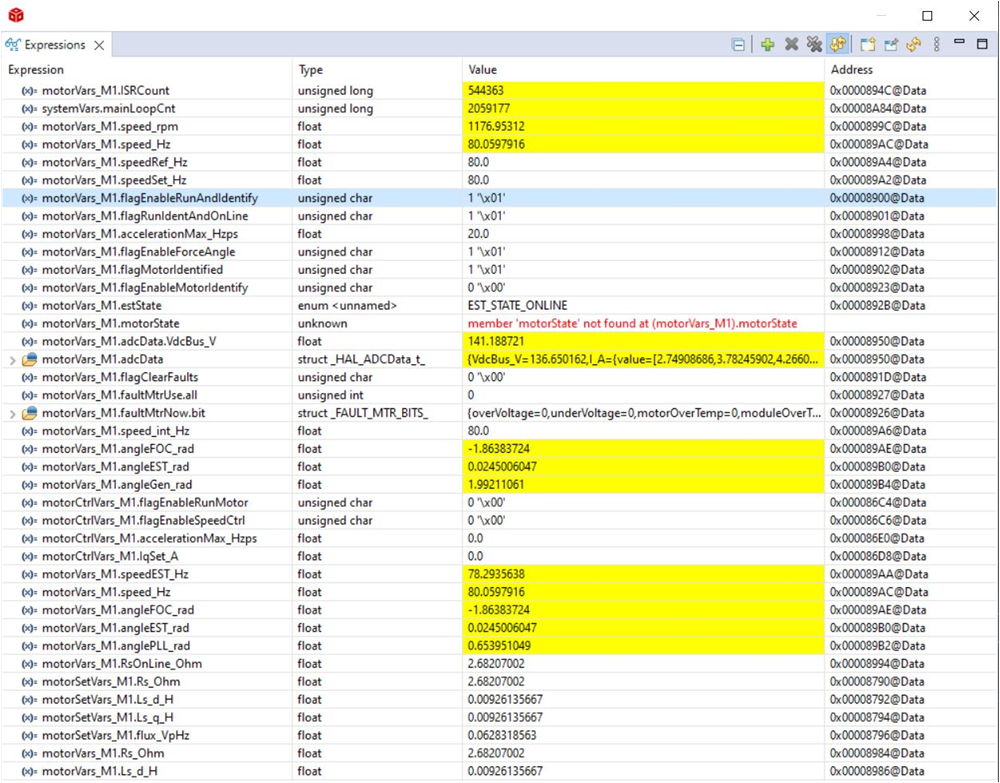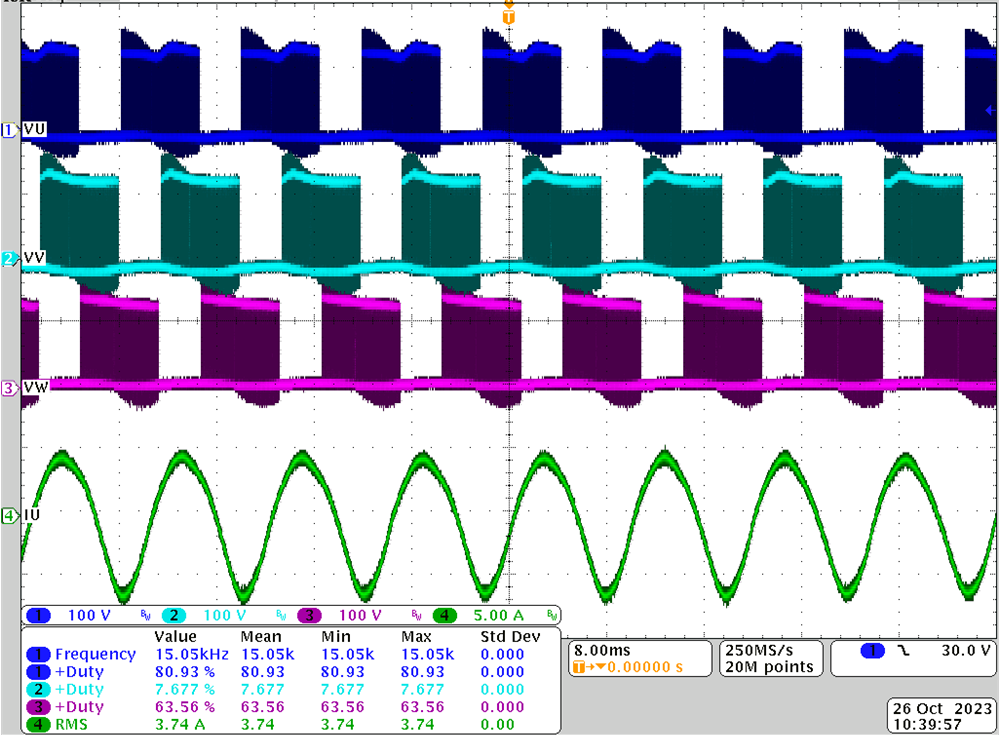SPRUJF4 October 2024
- 1
- Description
- Features
- Applications
- 5
- 1Evaluation Module Overview
- 2Hardware
- 3Motor Control Software
-
4Test Procedure and Results
- 4.1 Build Level 1: CPU and Board Setup
- 4.2 Build Level 2: Open-Loop Check With ADC Feedback
- 4.3 Build Level 3: Closed Current Loop Check
- 4.4 Build Level 4: Full Motor Drive Control
- 4.5 Test Procedure
- 4.6 Performance Data and Results
- 5Hardware Design Files
- 6Additional Information
- 7References
4.5.4.2 Build Level 2 Test Procedure
- Ensure initial steps listed in Section 4.5.4 have been completed.
- To verify the current and
voltage-sensing circuit of the inverter for the motor, motor_1 needs to run
with v/f open loop. Tune the v/f profile parameters in user_mtr1.h as
below according to the specification of the motor if the motor does not spin
smoothly.
#define USER_MOTOR1_FREQ_LOW_Hz (10.0f) // Hz #define USER_MOTOR1_FREQ_HIGH_Hz (200.0f) // Hz #define USER_MOTOR1_VOLT_MIN_V (10.0f) // Volt #define USER_MOTOR1_VOLT_MAX_V (200.0f) // Volt - The motor now spins with a setting speed in the variable motorVars_M1.speedRef_Hz, check the value of motorVars_M1.speed_Hz in the Expressions window. The value needs to be very close, as shown in Figure 4-10.
- Connect the oscilloscope voltage and current probes to watch the motor phase voltage and current as shown in Figure 4-11.
- Verify the overcurrent fault protection by decreasing the value of the variable motorVars_M1.overCurrent_A, the overcurrent protection is implemented by the CMPSS modules. The overcurrent fault is triggered if the motorVars_M1.overCurrent_A is set to a value less than the actual current, the PWM output is disabled, the motorVars_M1.flagEnableRunAndIdentify is cleared to "0", and the motorVars_M1.faultMtrUse.all is set to "0x10".
 Figure 4-10 Build Level 2: Expressions
Window at Run Time
Figure 4-10 Build Level 2: Expressions
Window at Run Time Figure 4-11 Build Level 2: Motor Phase
Voltage and Current
Figure 4-11 Build Level 2: Motor Phase
Voltage and Current